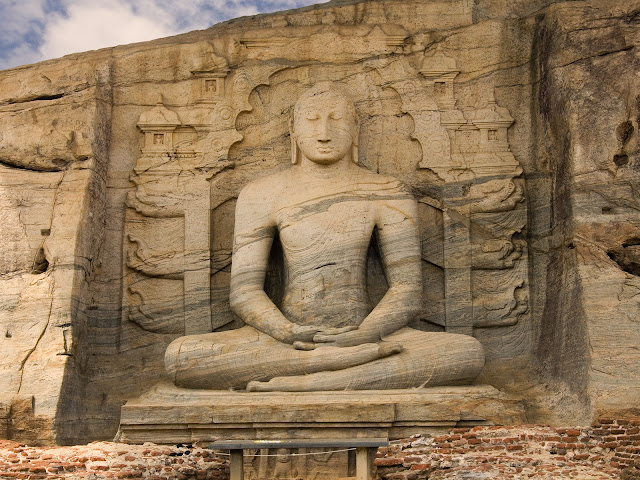Polonnaruwa | History
Polonnaruwa
After ruling the country for over 1,400 years, the Kingdom of Anuradhapura fell in 1017 to the Chola King RajaRaja and his son Rajendra, who took King Mahinda V as a POW to Tamil Nadu; where he died in 1029. The Cholas shifted the capital from Anuradhapura to Polonnaruwa and ruled for nearly 53 years. Polonnaruwa was named as Jananathapuram by the Cholas. King Vijayabahu I (or Kitti) eventually defeated the Cholas and re-established the Sinhalese monarchy. Polonnaruwa had always been considered an important settlement in the island, as it commanded the crossings of the Mahaveli River towards Anuradhapura.
3 years after restoring Anuradhapura, Vijayabahu prepared to fight a possible invasion. He moved the capital out of Anuradhapura to a more defensive position, Polonnaruwa. After the victory at Polonnaruwa, Vijayabahu had to face more rebellions. This caused him to delay his coronation, which took place in 1072 or 1073,]eighteen years after being crowned as Vijayabahu in Ruhuna; and after a military campaign that lasted seventeen years. Polonnaruwa was renamed Vijayarajapura and chosen as the capital. The coronation ceremony was held in a palace built for this purpose in Anuradhapura, the former capital of the country. Vijayabahu married Lilavati, the daughter of Jagatipala of Kanauj, as his queen. He later married Tilokasundari, a princess from Kalinga, with the view of strengthening ties with the Kalingas.
Succession war
Vijayabahu's death left a disputed throne, the absolute successor Parakramabahu I, was only selected after a war between the claimants to the throne.
Firstly he entered secret negotiations with Gajabahu's military chief, these attempts to capture power failed. He then sent the army of Dakkhinadesa to capture Rajarata, but he was introduced to Manabaraha, who allied with Gajabahu. Despite the setback, he captured Rajarata. Gajabahu who found his army weakened found himself in a battle against Manabharana as well. He later delcared that he have passed over Rajarata to Parakramabahu of Dakkhinadesa. Manabharana was also defeated.
Parakramabahu
Following the end of the Kalinga-Arya conflict, Parakramabahu I, unified the three principalities: Rohana, Malaya, and Rajarata; declaring the islandwide Dakkhinadesa, formed the Polonnaruwa kingdom in the latter. His reign saw the expansion of the kingdom, leading raids and large-scale invasions against his opponents.
After Parakramabahu
Following the death of Parakramabahu, Vijayabahu II ascended the throne. He called Nissanka Malla to visit the country and take the throne. Vijayabahu II was however killed by the invader Mahinda VI.
Nissanka Malla assassinated Mahinda VI, and justified his killing by claiming he was the rightful ancestor of Vijaya Singha
Agriculture
Starting from the era of Parakramabahu I, there was great interest for irrigation. He ordered:

Let no water drop that fall from the rain make it to the sea without been useful to the mankind
Mass tanks were built for this purpose. Some of his notable works are the Parakrama Samudra and the Giritale tank. These works surpassed what existed during the Anuradhapura period. Previously built dams were largely renovated during this period.
Demographics
The Sinhalese accounted for the majority, Sinhalese language was the common language. Settlements from Cambodia are recorded, the Khmer settled in a area called Kambojavâsaĺa. The Khmer script was used to write Pali texts such as the Khmer script version of the Mahavamsa.







Comments
Post a Comment